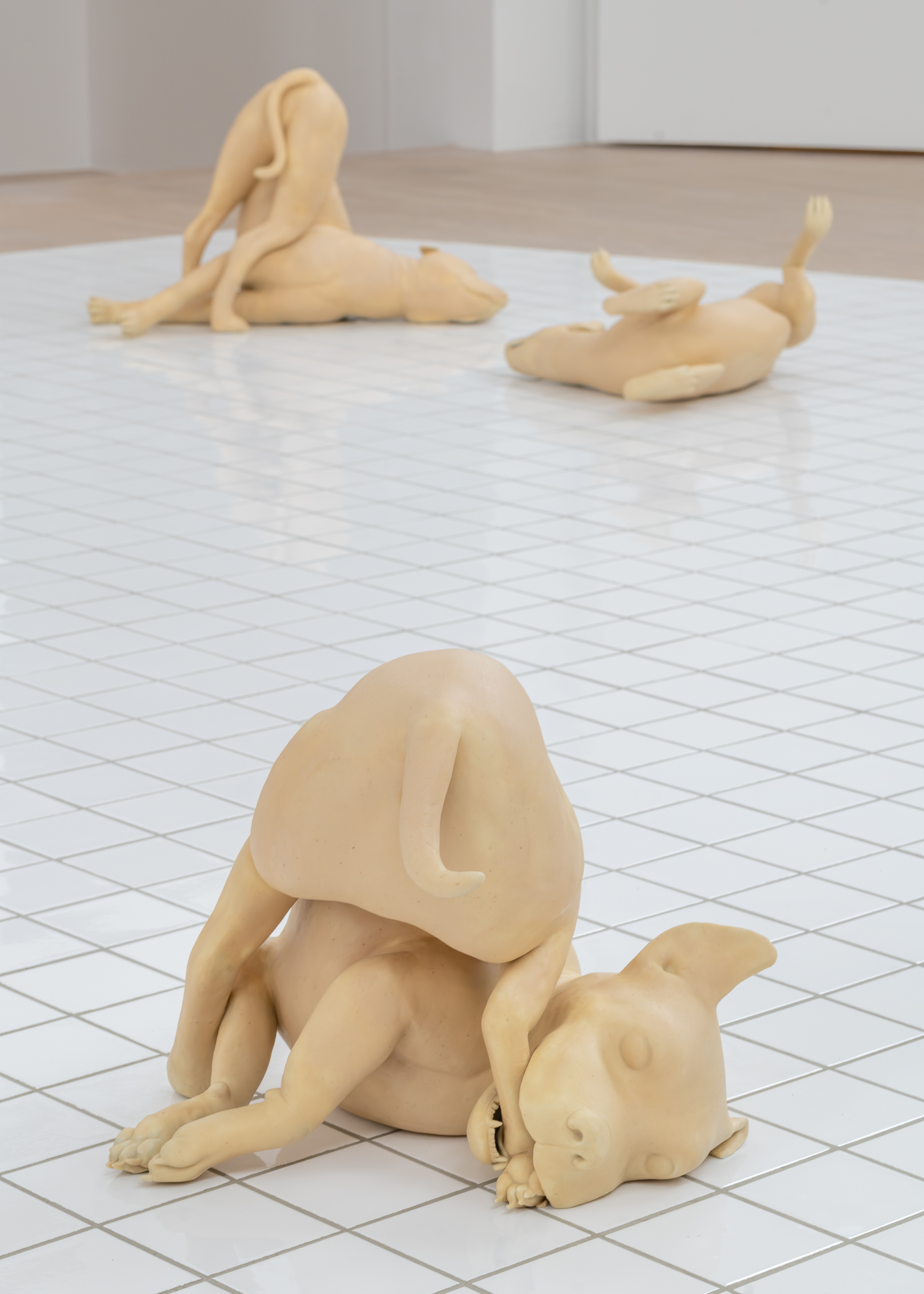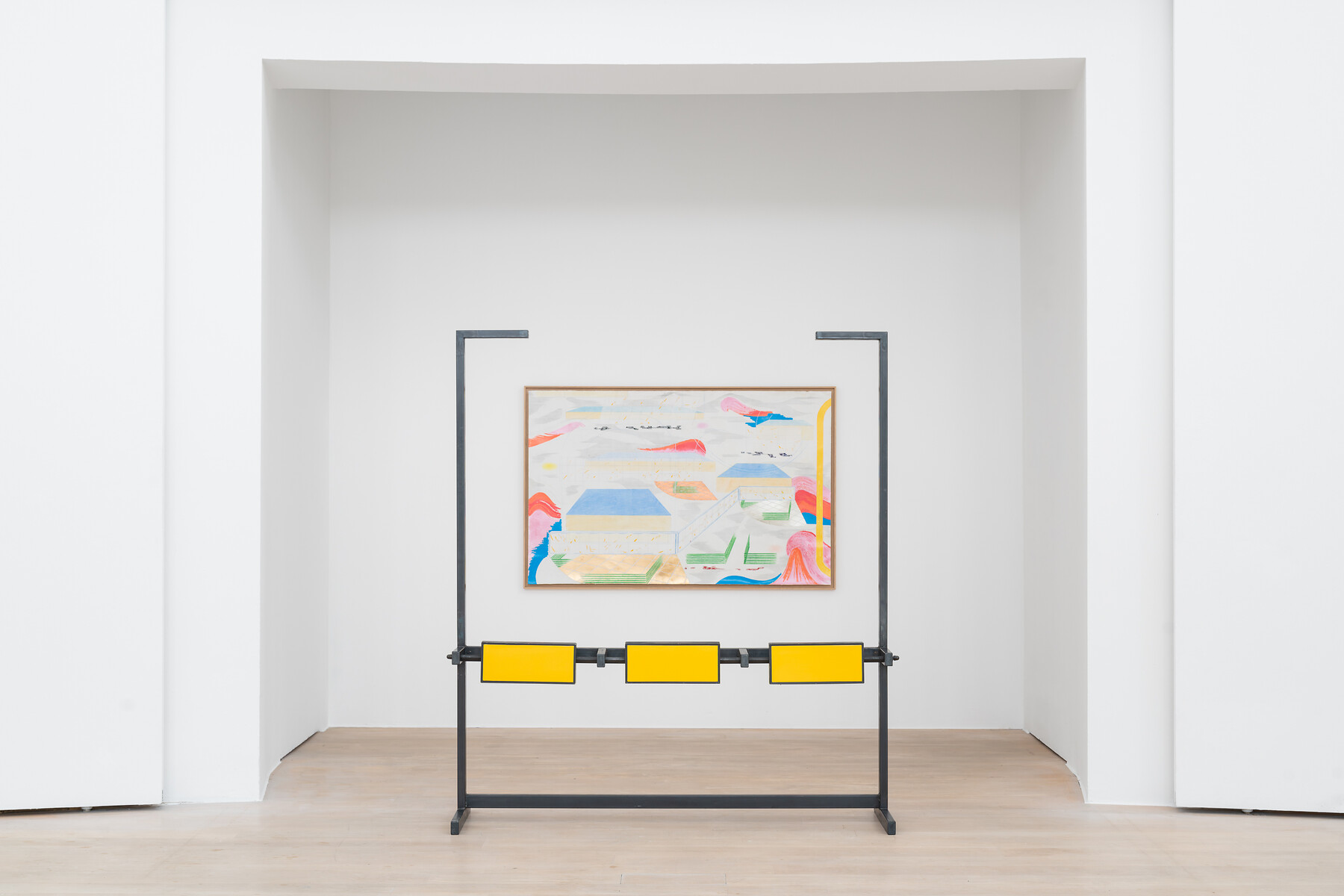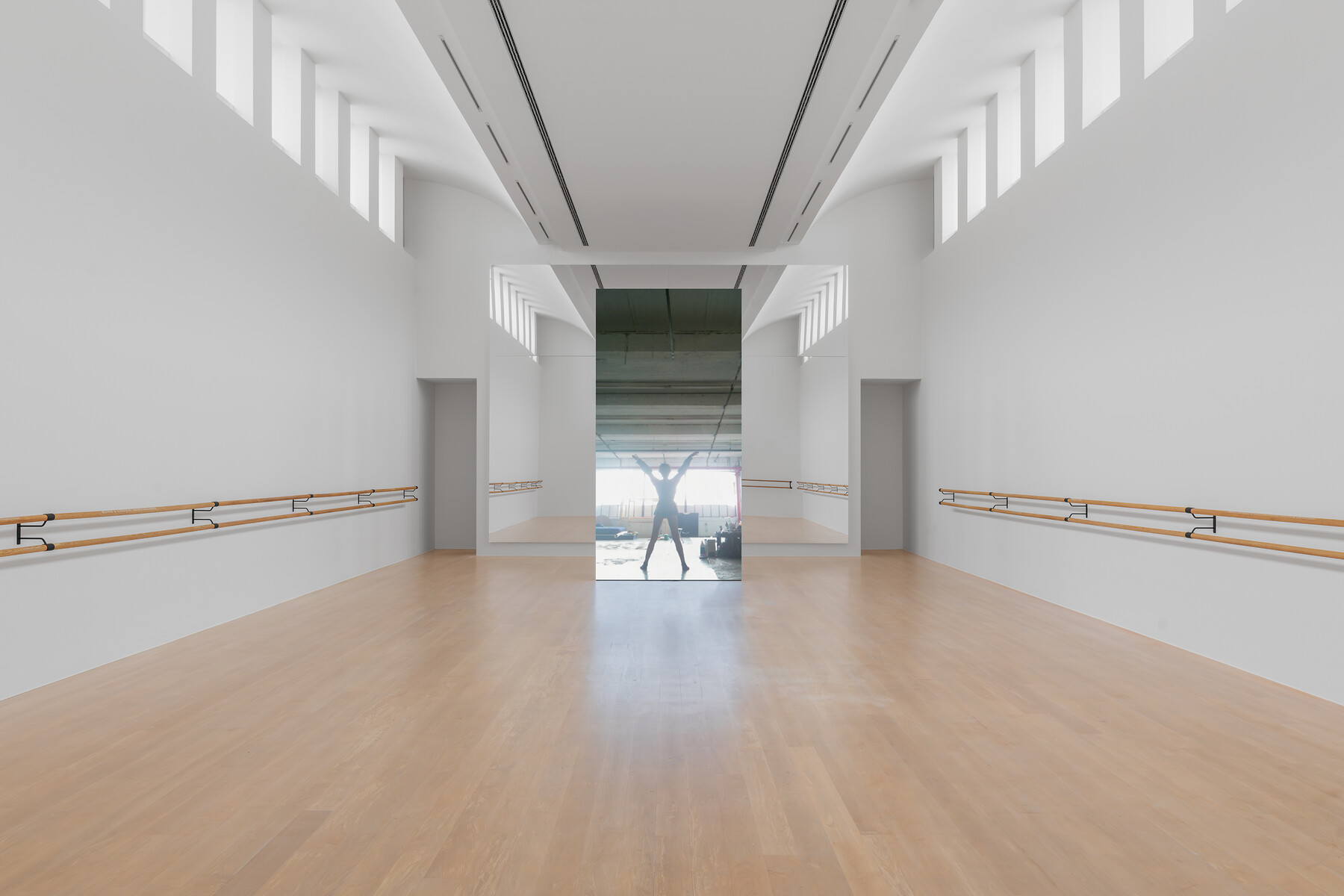YYYYMMDD >>> BACK HOME <<< >>> SELECTED FEATURES <<< >>> HIDDEN ARCHIVE <<<
[20240514]
DOLOREM IPSUM by ANNA K.E. at KESTNER GESELLSCHAFT curated by ADAM BUDAK and ALEXANDER WILMSCHEN [from 20230323 to 20230630]
[Photo: Volker Crone] [Courtesy the Artist, Galerie Barbara Thumm and Simone Subal Gallery]



















In her most extensive solo exhibition to date, Dolorem Ipsum, Georgian artist Anna K.E. explores the choreographed body and human states characterized by instability, alienation, and transformation within architectural landscapes. With her presentation, K.E. questions the perception and conception of flows of movement in space, humorously examining architectural guidance systems, structures, and barriers, as well as their imagined facades, thus breaking with social norms in the construction and performance of new paths. At the heart of her artistic practice is the continuous exploration of the human body, with a focus on ballet, post-communist conditions, and movement in modern architecture amid historically significant design elements. She investigates personal and collective bodily experiences of time, choreography, and pain, linking them in impressive installations to the physical and digital self. Trained as a classical ballet dancer, she reflects on human movement in the environment with her nuanced understanding of her own body, triggering a trajectory and new paths of motion that create alternative spatial structures through dance and performative gestures, contortions, and fluid arrangements.
With Dolorem Ipsum, K.E. has created new, all-encompassing installations for the two exhibition halls of the Kestner Gesellschaft, where she continues the central concerns of her kinetic and body-orientated works in the fields of video, sculpture, performance, drawing, and collage. The forum Silence in my Pocket includes a central tiled square with a flowing fountain. Contorted dog sculptures covered in marzipan linger next to brutalist bus stops and ominous sound domes. On a newly designed wooden shelf in the arcades, K.E. displays older works and personal artifacts that reflect her artistic practice with references to remains, the human physique, dance choreographies, and architectural design, as if placed on the workbench of a studio archive. Simultaneously, the domed hall engages in a dialogue with the rehearsal space Dolorem Ipsum, with its poetic ballet bars and monolithic video installation. The space is charged with profound thoughts about feminism, ballet, and the obsession with the digital self. In a poetic way, K.E. reflects flows of movement and at the same time examines spatial constellations of bodily and psychological boundaries that stage and anchor social experiences of power, violence, and freedom in architectural environments.
The enigmatic yet familiar exhibition title Dolorem Ipsum refers to the tradition of the placeholder text “Lorem ipsum …”, whose words are visually recognizable yet absurdly incomprehensible, endlessly repeatable as a philosophical text by Cicero on pain and pleasure from antiquity, a dummy text with no directly decipherable meaning that refers to the ambivalence between philosophical ideas of pain and pleasure. With the exhibition title, K.E. consciously takes up her continual investigation and critique of normative linguistic and text systems and their social impacts—a topic that has occupied her since her engagement with the Georgian alphabet and the Asomtavruli script.
Anna K.E. (born 1986 in Tbilisi, Georgia) was a student at the famous Georgian Vakhtang Chabukiani Ballet School. She studied at the Staatlichen Akademie der Bildenden Künste Stuttgart and at the Kunstakademie Düsseldorf. K.E. represented Georgia at the 58th International Art Exhibition - La Biennale di Venezia 2019 and participated in numerous international solo and group exhibitions. Her works are represented in important public and private collections.
[Text: Adam Budak + Alexander Wilmschen]
©YYYYMMDD All content and design by Daniela Grabosch + Ricardo Almeida Roque unless otherwise stated. Images, Videos and Texts can only be used under permission of the author(s).